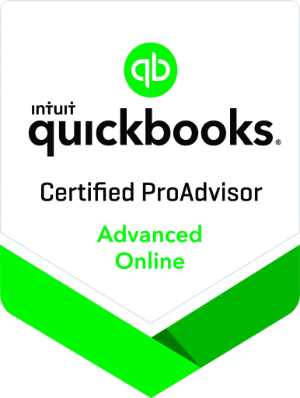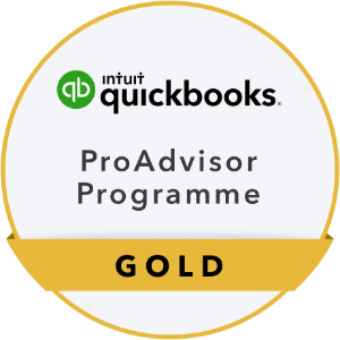We’re coming up to the time of the year that most charities dread – time to prepare the annual accounts and the annual report. Typically, this task falls to the finance team, which means it’s not unusual for it to become a clinical statement of facts and figures that simply satisfy a regulatory requirement.
But why would you do that?
It’s boring to write, it’s boring to read, everyone resents the fact they have to do it, and as a result dread this time of year coming round yet again.
But what if it we stopped thinking of it as a report and saw it as a promotional opportunity?
If you treat the exercise as something akin to creating a brochure, employing the same marketing methodology you would use with any other tactic, you switch from reporting facts to selling your charity – and that’s going to deliver a return.
Not sure what that marketing methodology is and where to start? Take a look at our 7 steps below:
Step 1: Define your audience
Regulators, donors, volunteers, grant funds, corporates, beneficiaries – depending on who you’re talking to, you’d naturally adapt your communication style. Writing an annual report is no different.
It could be that the type of charity you are defines your audience. For example, if you’re simply making grants it probably makes sense to just tick the box and submit a bog-standard annual report.
But if you’re a charity seeking donations, you’ll need to use your report to show all the wonderful things your charity has done as a result of the money and/or volunteered hours it received.
If your focus is on securing large grants, it makes more sense to share your aspirations for the future and how securing that funding will help the charity achieve those goals and the impact it will have to the community. Or if you’re aiming for more corporate sponsorship, think about the photo opportunities and news stories you could entice them with to secure joint media coverage.
And if your core purpose is about raising awareness or providing information to the beneficiaries, you’ll want to share stories about how your service(s) have made a difference to other people in their position.
Once you know who you’re producing your annual report for, the writing becomes much simpler and far more focused.
Step 2: Agree the purpose
Imagine your audience has finished reading your report – what’s the one thing you want them to remember?
Perhaps you’re working towards a milestone, like raising sufficient funding to open a new centre or launching a new service. Maybe it’s welcoming your 100th volunteer onboard. Or you might have an anniversary coming up, like celebrating 25-years, and are planning something spectacular to mark the occasion.
Agree the key message that you want to push, and this becomes the narrative that you follow throughout your report to get the audience excited.
Step 3: Tell a story
The Charity Commission’s view is:
“Your trustees’ annual report helps people to understand what your charity does, particularly potential funders and beneficiaries. You need to write your trustees’ report if your charity is registered in England or Wales. Along with your accounts, the report tells people:
- About your charity’s work.
- Where your money comes from.
- How you’ve spent your money in the past year.”
Rather than report in a matter-of-fact way, a simple listing of your services, showing a nice pie chart of where your income came from and a spreadsheet of expenditure, use your words to bring your work to life.
Top tip! Ask yourself “So what?”
For example:
We recycle books so that disadvantaged children can access them.
“So what?”
1 in 4 disadvantaged children across the UK has fewer than ten books of their own at home. (National Literacy Trust)
“So what?”
Children who read books often at age 10 gain higher results in maths, vocabulary and spelling tests at age 16 than those who read less regularly. (The Reading Agency)
“So what?”
It’s through books that we can break the cycle and ensure every child has access to the same opportunities in life, regardless of their background.
In continuing to ask “So what?” you’ve managed to establish the problem, identify the opportunity and articulate your value proposition in a way that makes the service far more compelling than just ‘we recycle books’.
Step 4: Be human
What do you think when I say:
“90% of our beneficiaries rate our service as outstanding.”
It’s not very inspiring because it’s just a statement of fact.
So what about:
“9 in 10 beneficiaries rate our service as outstanding – including Sarah, who commented, ‘For the first time Charity A helped me see a future for myself, helping me to write a CV that showed all my skills and coaching me in interview technique’.”
When you help people to see and feel what you do, they act. So wrap your statistics in context to change the cold, hard facts into something engaging so the audience can visualise the outcome. Inserting mini case studies, or testimonials from your beneficiaries throughout is a great way to achieve this.
And then think about showing some vulnerability.
No-one’s perfect. Things go wrong, we all make mistakes – that’s life. To make a personal connection with your audience, show them the good, the bad and the ugly. There’s a technique grounded in behavioural science called the ‘Pratfall Effect’. Essentially, if you show someone a flaw it instantly builds trust because they see you’re being honest.
Think about including details of something that perhaps didn’t go to plan this year, the impact that it had on the volunteers and the beneficiaries, and how you plan to make sure you hit that target this year. Or share a known weakness in your charity – perhaps your website isn’t showing you in your best light, or you lack a clear identity – your never know who might be encouraged to step forward and volunteer their skills to help.
Step 5: Pull out the juicy bits
Even if you don’t have access to design skills you can still make your words jump off the page with a little bit of formatting, like changing the size, font or colour.
If you’ve got a lovely statistic, some positive feedback or a ‘win’ that you want your audience to take notice of, make your words big, bold and beautiful so they sing from the page and immediately draw the reader’s eye.
Step 6: Choose strong visuals
As the saying goes, “a picture says a thousand words”. And it’s true. Why take up your audience’s valuable time explaining something in words that can be easily communicated with visuals?
Think about where you could use photographs, infographics, charts/graphs and diagrams to emphasise certain aspects of your work, and draw the reader’s attention to your success stories.
Step 7: Include a call-to-action
This is the moment we’ve been building to. Back in step 2 we identified the key message we wanted the audience to remember, now we ask them to act on it. For example, to donate funds to your charity, to volunteer their time, services or skills, to purchase/use your services, or to help you raise awareness.
Whatever your call-to-action is, it’s important that:
- You spell out exactly what you want the audience to do. For example, “Click here to donate now.”
- You make that action simple for them to perform.
As part of your call-to-action, you need to determine how will you measure the success of what you’re asking from them.
For example, if you’re asking the audience to donate, you could set up a dedicated page so it’s easy to track how many people click through to visit the page. Or when new volunteers sign up, you can ask what prompted them to get in touch.
Need some help?
We believe that smaller charities deserve to have access to the same resources larger charities do to meet their regulatory obligations, as well as ensure the successful management of their charity. Therefore, we’ve put together a number of tools and resources to help make your life easier – including this 1-page overview on how to prepare great annual reports.
Alternatively, if you have any questions about your annual report, or need some help preparing your annual accounts, why not send us a message…






